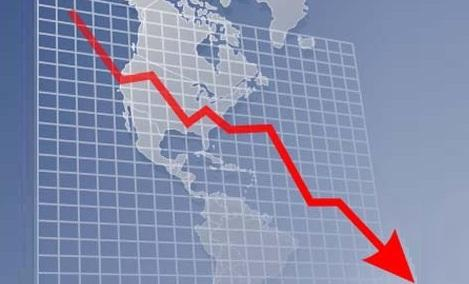Market

January 28, 2021
Cracks Forming in Towering U.S. Steel Prices?
Written by Michael Cowden
Cracks might be forming in the groundwork that has to date led U.S. flat-rolled steel prices to their highest point on record.
Whether they are big enough to send towering prices tumbling down or merely a distraction remains to be seen, markets sources generally agreed.
Prices have nowhere to go but up in the short term given limited spot availability and long mill lead times, some said.
“One of the mills couldn’t get me any tons for March–not even a lousy railcar–and I was getting 1,000 tons a month from them before on the spot market,” one East Coast service center source said.
But mills might have trains full of steel with no home once they catch up to current demand, others said.
“And we know what happens when they catch up,” one Ohio Valley service center source said. “They take the stairs up. And then they don’t take the elevator down–they jump out the window.”
Futures
One potential crack comes from futures markets–which indicate that steel prices could peak in February before declining for the balance of the year.
The CME Group’s hot-rolled coil contract for February settled at $1,149 per ton ($57.45/cwt) on Friday, Jan. 29–modestly above Steel Market Update’s average HRC price of $1,140 per ton.
The catch: The futures curve implies that February might be the high-water mark for 2021 HRC prices.
The March contract settled at $1,084 per ton on Friday, a 5.7% decline from February. April settled at $994 per ton, or 13.5% lower. And futures markets indicate that prices will turn sharply lower over the summer months. The August contract, for example, settled at $770 per ton on Friday, a 33% drop.
Trading volumes in steel futures are not nearly as high as those in other commodities, and they don’t always represent a full spectrum of views about the market. But some market participants said they think the downward trend in the futures market is already backed up by evidence of lower prices in the physical market.
Lower Scrap and Volume Discounts
Another crack comes from expectations that February scrap prices will settle lower for the first time since September. Obsolete grades are expected to settle down significantly next month and prime material sideways or down modestly.
Larger declines for obsoletes were expected because obsoletes are elastic to price. In other words, higher prices earlier this month pulled more scrap into the market ahead of February’s settlement–and increased supply now means lower prices next month.
Prime scrap, while tighter because of increased demand from flat-rolled EAFs, is typically more readily available in February because automotive plants, which generate it as a waste product, resume normal operations following year-end holiday shutdowns.
Some larger spot buyers–ones capable of buying tens of thousands of tons at a time–are already at or around $1,000 per ton, sources said. That’s a change from late 2020 and early 2021, when the market was tight and even big buyers were not able to secure the volume discounts they typically receive, they said.
It’s not clear how widespread such deals were. And some sources said they might be more readily available in the South than in northern markets.
More tons have already come into the market in the South because of Big River Steel ramping up its second electric-arc furnace and caster. And more are expected to become available in the North in March when JSW Steel USA restarts its EAF in Mingo Junction, Ohio, following an extended outage for upgrades.
Imports
A third crack comes from lower priced imports.
Hot-rolled coil is available at or significantly below $1,000 per ton ($50/cwt) from multiple destinations–including Mexico, South Korea, Turkey and Vietnam, market participants said.
And in certain cases material might be available for closer to $900 per ton, some said.
A rough midpoint of the HRC import figures provided to Steel Market Update would put foreign HRC at approximately $950 per ton, or $250 below U.S. mill offers of as much as $1,200 per ton. And $950 per ton is approximately $190 per ton less than SMU’s current U.S. HRC price.
Such differences would typically make imports attractive to domestic buyers. But sources said they were concerned about import lead times stretching out as far as June or July given the potential for domestic tags to correct downward during that period.
Also, Steel Dynamics Inc.’s new mill in Sinton, Texas, will also be starting up this summer, and SDI has made clear its intent to displace imports.
But for others, the risk seems worth taking–especially if they find themselves frustrated with long U.S. mill lead times, chronically late deliveries on top of those extended lead times, and in some cases an inability to procure enough steel to meet their needs.
A similar situation is playing out in the plate market.
Steel Market Update’s plate price currently stands at $1,010 per ton, just shy of the $1,020-per-ton base prices Nucor announced for March orders of cut-to-length A36 grade plate.
Plate from South Korea, in contrast, is available for approximately $900 per ton to Gulf Coast ports, or $120 per ton below U.S. mill offers, sources said. And material from other origins might be available for even lower prices, some said.
U.S. plate mills continue to hold firm on fob mill prices. But in order to stand their ground on an fob basis, some are increasingly willing to cut deals on freight–and that’s not something they do when order books are on a rock-solid foundation, they noted.
By Michael Cowden, Michael@SteelMarketUpdate.com
The post Cracks Forming in Towering U.S. Steel Prices? appeared first on Steel Market Update.






